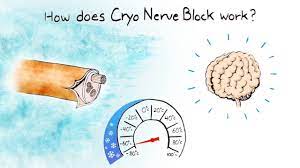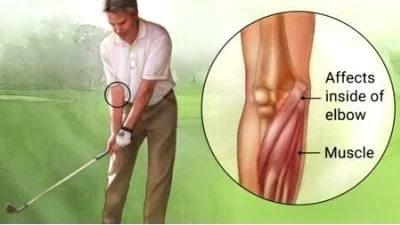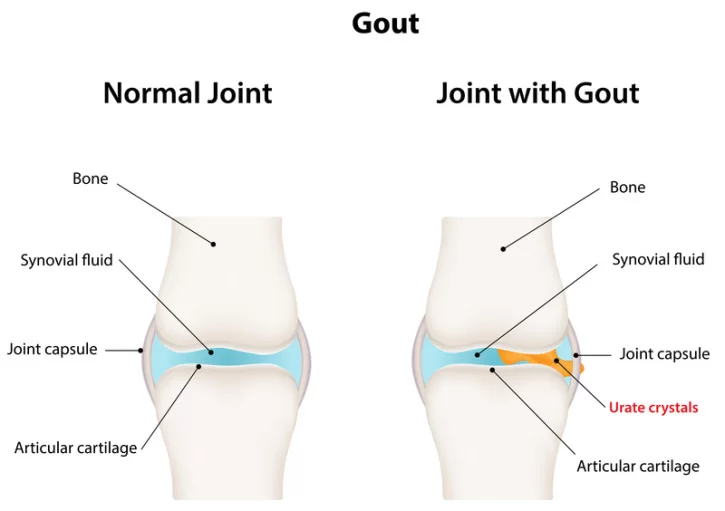Cryo Nerve Block Therapy for Pain Management
Table of Contents
What is Cryo nerve block therapy?
- Cryo Nerve Block Therapy is harness the power of cryotherapy to give a new form of temporary pain relief for patients who undergo certain invasive cardiac or/and thoracic surgical procedures. This technology uses a unique freezing task to temporarily block pain signals from the nerves in the affected area, giving an effect similar to a local anesthetic.
- Cryo Nerve Block involves freezing the nerves addressed in your chest beneath each rib. cryo nerves are one of the main sources of pain after chest surgery, and cryo nerve block assists by temporarily locking off the nerve. With Cryo Nerve Block sensation of numbness after surgery, which means a lot less pain.
Introduction of cryo nerve block therapy
- nerve has two main parts, an outer possessive structure and the actual nerve that senses pain. Freezing the nerve at a specific temperature is not able without damaging the possessive structure. This permit it to regrow right back where it was before. Over several months, the nerve steadily regrows, about one to two mm per day or/and about the thickness of a credit card. The numbness will slowly go far and normal nerve feeling recopes starting from the sideways and going towards the sternum.
- Providing Several Months of Post-Operative Pain Relief
- Cryotherapy was originally established as a treatment for cardiac arrhythmias. pain management experts to develop new techniques for applying cryo nerve block to nerves, specifically in order to block pain. cryo ice cryosphere cryoablation probes are sterile, single-use devices intended to block pain by temporarily ablating peripheral nerves in adult patients. cryo nerve blocks are also indicated for the ablation of peripheral intercostal nerves for patients of at least 12 years of age.
surgical procedures for Cryo Nerve Block Therapy
- Cryo Nerve Block is most commonly used during surgical procedures involving the chest wall. These types of procedures involve but are not limited to the following:
- Thoracotomy defines as an incision made in the chest wall to access the contents of the thoracic cavity. Thoracotomies generally can be elaborated into two categories; anterolateral thoracotomies and posterolateral thoracotomies. These thoracotomies can be further elaborated into supra-mammary and infra-mammary and, of course, further elaborated into the right or left chest. Each type of incision has its service given certain circumstances.
Lung surgery involves
- Pneumonectomy A pneumonectomy is a surgical procedure to remove one part of the lung. It is the most expanded type of lung removal surgery. Surgeons most often perform it to remove lung masses and growths, like non-small cell lung cancer, but sometimes doctors will remove a lung to treat other conditions, such as:
- COPD Tuberculosis (TB) is a Traumatic lung injury Congenital lung disease has two types of pneumonectomy, simple and extrapleural. A simple pneumonectomy removes just the lung. An extrapleural pneumonectomy takes away part of the diaphragm, the parietal pleura, and the pericardium on that side as well.
- Lobectomy A lobectomy is a surgical procedure to remove one of the lobes of the lungs. The lungs have sections called lobes. The right lung has 3 lobes. The left lung has 2 lobes. A lobectomy may be done when a problem is found in just the area of a lung.
- Surgeons may also operate lobectomies to treat:
- fungal infections
- benign tumors
- emphysema
- lung abscesses
- tuberculosis
- Wedge Resection Wedge resection of the lung is a surgical operative procedure where a part of a lung is removed. It is done to remove a localized portion of diseased lungs, such as early-stage lung cancer.
- Segmentectomy is a Surgical procedure to remove part of an organ or/and gland. segmentectomy may also be used to remove a tumor and normal tissue around it. In lung cancer surgery, segmentectomy indicates removing a section of a lobe of the lung. Also called segmental resection.
- Lung Transplant A lung transplant is a surgical procedure to change a diseased or/and failing lung with a healthy lung, generally from a deceased donor. A lung transplant is reserved for people who have tried medications or other treatments, but whose conditions haven’t sufficiently improved.
- Pectus Excavatum Repair Nuss Procedure The pectus excavatum repair is a surgery to fix the shape of the bone in the middle of the chest, termed the sternum or/and breastbone so that the inward curve of the chest does not congest the lungs and the heart.
- Rib Fracture Repair Most broken ribs heal on their own within six weeks. limiting activities and icing the area frequently can help with healing and pain relief.
- Esophagectomy: An esophagectomy involves removing some or most of the esophagus, a portion of the top of the stomach, and nearby lymph nodes if cancer is involved.
- Minimally invasive cardiac surgery Minimally invasive heart surgery is a term for procedures performed over one or more small chest incisions. In contrast, open-heart surgeries use one long incision down the center of the chest. The minimally invasive approach may advertise less scarring and pain and a faster recovery.
Cryotherapy for the cryo nerve block
- the method of cold for various therapeutic purposes is termed cryotherapy
- it is another form of cryo nerve block therapy cryoblation
- cryotherapy commonly used in the treatment of acute and subacute injuries, after surgical treatment
- the temperature of body tissue is reduced and the heat is transferred from the body tissue to the cold medium
- the magnitude of cold depends upon the area of the body tissue exposed, the temperature of the cooling agent, duration of exposure
- the depth of penetration is also related to the intensity and duration of cold exposure, and circulatory response to the body segment exposed
- thus the continuous source of cooling, the temperature drop in the tissue will depend on
- the temperature difference between coolant and tissue: the colder the application, the greater the heat loss from the tissue
- thermal conductivity of the tissue: differs from one area to another
- water-filled tissues such as muscle have high thermal conductivity as compared to fat or skin
- the normal layer of subcutaneous fat serves as thermal insulation for the inner tissue so that the heat loss through the tissue and cold penetration is largely dependent upon the blood flow
- length of time for which cold is applied: the amount of energy loss is fully dependent upon the length of exposure
- size of the area that is being cooled: the smaller area more will be cooling
What happens before cryotherapy?
- Before cryoablation or cryotherapy, the physiotherapist will give you instructions on how to prepare. Depending on what type of cryoablation or /and cryotherapy you’re having and other factors,
- organize an outing home after the procedure.
- Report if you may be pregnant.
- Stop taking certain medicines, such as aspirin, NSAIDs, or/and blood thinners.
- Take certain medications in advance to inhibit pain or infection.
- Tell them if you have any allergies or/and health conditions.
- Wear loose, comfortable clothing on the day of the procedure, and remove jewelry and valuables at home.
What happens during cryoblation?
- If you are having percutaneous or surgical cryoablation, a physiotherapist may ask you to wear a hospital gown during the procedure. may receive anesthesia. It can prevent pain in a specific area by numbing spray or/and needle, making you feel relaxed, or putting you to sleep so that feel nothing.
- Just before cryoablation, the therapist will position you on an examination table. They might shave or sterilize the area. For surgical procedures attached to machines to monitor the heart rate, blood pressure, oxygen level, and pulse.
- During cryotherapy, a surgeon uses a needle-like, hollow applicator termed a cryoprobe. The cryoprobe consists of and circulates extremely cold gas, such as:
- Liquid nitrogen.
- Liquid nitrous oxide.
- Compressed argon gas.
- When working inside the body, the surgeon uses imaging technology to locate the correct area. The specialist touches the diseased or/and abnormal tissue with the cryoprobe for a few seconds or/and minutes. The intense cold at the tip of the cryoprobe chill and destroys the diseased tissue. the surgeon might need to touch the diseased tissue with the cryoprobe more than one time.
- When cryoablation is flawless, the surgeon removes the cryoprobe and closes the incision if needed. The whole procedure can take just a few minutes for small skin problems to a few hours for open cryosurgery.
What happens after cryoablation?
- People generally go home the same day as cryoablation. But a few may need to stay overnight if the procedure involved a large incision or a deep tumor. Someone should drive home after cryoablation, except for simple skin procedures.
- Over time, the body will naturally get rid of the dead cells.
Principles of Cryotherapy
- when cold therapy is applied to the tissue, the heat is absorbed from the tissue by the cooling agent
- ice changes its state from solid to a liquid by absorbing heat
- a specific amount of energy is required to change the solid form of ice into the water which is called the latent heat of fusion
- 1 g of ice at 0 degrees c requires 336 joules of energy to convert it into 11 g of water at 0 degrees C
- whereas 1 g of water at o degree C requires 155 joules of energy to convert it into 1 g of water at 37 degrees C
- thus, for cooling the body tissue, better to use ice for treatment rather than water
Techniques of application of cryotherapy
- ice massage: ice is placed in a polyethylene bag and applied over the body tissue.ice cubes, crushed ice, and flaked ice can be used
- the ice bag is placed over the patient’s body part and the patient isn’t allowed to lie over the pack
- the pressure of application should be minimal and the movement of the ice bag should be to and fro and circular
- the ice can be placed over the body part for a period of 10 to 20 minutes
- ice towels: popular method of application because there is little danger of producing an ice burn, prepare the ice solution by filling a bucket or bowl with 2 parts flaked or crushed ice to one part water in which two terry towels are engrossed
- the surplus water is wrung from the towel, leaving as much ice clinging to it as possible
- it is after being applied to the part being treated
- the towels are replaced after every 30 seconds to 2 minutes. up to 10 towels can be applied consecutively with a total treatment time of 15 to 20 minutes
- immersion in the cold or cold whirlpool: the part of the body is immersed in cold water or a whirlpool in which the temperature of the water is lowered up to 0 to 10 degrees C
- flaked ice or crushed ice is used in a solution with water to form a slush
- the extremity of the body can be effectively treated with the immersion of cold
- the total duration of treatment is around 10 minutes in which the patient can immerse either for single 10 minutes or a series of shorter immersions until the accumulative total of 10 minutes has been reached
- cold packs: commercially used cold packs are used for administering cold, cold packs contain special material which retains cold like silicate gel available in various sizes and shapes, different body areas are treated with different sizes and shapes of cold packs
- these cold packs are stored in a special freezer or refrigeration for at least 20 minutes to 1 hour before use
- advantage of cold packs are reusable and can contour or mold themselves according to body part treated
- evaporative cooling or vapocoolant sprays: the use of vapocoolant sprays is increasing nowadays, these are being used very commonly in sporting activities or athletic injuries
- the vapocoolant sprays are made up of fluoromethane or ethyl chloride. the jet of spray is usually applied from a distance of about 1 foot or 12 inches
- gentle stretch is applied to the tissue after the application of vapocoolant sprays
- excitatory cold: the marked sensory stimulus of ice on the skin can be used to facilitate the contraction of inhibited muscles. ascertain the spinal root level supply myotome of the inhibited muscle and find the area of skin which has the same root supply dermatome
- the ice is stroked quickly three times over the dermatome and the skin is dried after applying excitatory cold, this sensory stimulus passes via the peripheral nerve and enters the cord through the posterior horn. it raises the level of excitation around the anterior horn cell as acetylcholine has a connection with these sensory fibers. the increased excitation may supplement the patient’s willing achievement to make the muscle contract. the technique of quick ice is often a useful stimulus in aiding the voluntary contraction of muscle
Effects of cryo therapy
effects on the circulatory system
- the initial response of the body tissue to cold is to preserve heat .this is accomplished by an initial phase of vasoconstriction when homeostasis is reached and the body part has become cooled following a phase of vasodilatation
- alternately following the phase of vasoconstriction and vasodilatation. this appears to be hunting toward the mean point and is termed lewis’s hunting reaction
- the initial phase of vasoconstriction helps to reduce the flow of blood into the tissue following a recent injury and helps to limit swelling and the extent of tissue damage and removes waste products of metabolism like lactic acid and delays fatigue
effects on the nervous system
- the rate of conduction of the nerve fibers is decreased by cold
- the major effects of ice application to relieve pain. the probable mechanism involved in the stimulation of cold receptors which send back the impulses which have passed into the spinal cord via the posterior root. these impulses which arrive through relatively large diameter nerves effectively block the pain impulses attempting to gain access to the spinal cord and the pain gate is closed
- the cold stimulus is noxious one can stimulate the midbrain which may release beta-endorphin or enkephalin the body’s opiate-like substance into the posterior horn and reduce pain
Therapies for cryo nerve block
concomitant surgical ablation therapy
- Atrial fibrillation bears a heavy clinical burden, with patients experiencing a 5x greater risk of stroke and a 5x acceleration in heart failure. stroke and heart failure patients also experience up to a 47% reduction in quality of life-related to anxiety about medications
- For patients with Atrial fibrillation needing open heart surgery to fixate a coronary or valve issue,
Ablation Sensing Unit (ASU)
- The ablation sensing unit produces and delivers radiofrequency energy in a bipolar mode, at a frequency of approximately 460 kHz, with a maximum output power ranging from:
- 22.8 watts up to 28.5 watts frequency for the Isolator clamps
- 12.0 watts up to 30.0 watts frequency for the Isolator Transpolar pen or Coolrail linear pen devices depending on the mode of operation
- The operating approach is a function of the handpieces and or/and pen and is set by the Ablation sensing unit. The ablation sensing unit is intended to operate only with a Bipolar Handpiece, Isolator Pen, or Coolrail linear pen. The footswitch is the input device used to activate Radiofrequency energy delivery.
- Used in conjunction with the Ablation Switch Box, optimal algorithms maintain the balance of energy delivery with the impedance of the tissue. As the tissue temperature accelerates, impedance decelerates. capacity should be reduced to neglect overheating the tissue at the surface as the cells begin to break down, and impedance accelerates. Capacity should be accelerated to maintain the rate of work.
Ablation Switch Box
- The Ablation switch box is a reusable accessory interface module that allows the simultaneous association of Isolator Transpolar ablative handpiece and pen devices to the Radiofrequency generator.
cool rail pen
- The Coolrail Linear Pen is the standard in long linear ablation and is the longest linear device at 30 mm which decreases the number of applications and potential for gaps. Long linear ablation capability is paired with fifty degrees of total head fabrication and a malleable shaft that is not able to access difficult anatomy while granting angles that promote consistent tissue relation during ablation. Coolrail is able to achieve full-thickness lesions by way of a utilize internally cooled not dazed electrode system that draws heat far from the tissue, through the electrodes, and the circulating flow that obtain the electrodes/tissue surface cool enough to drive energy into the tissue and generate robust lesions.
- The Coolrail Linear Pen is a sterile, single-use electrosurgery device intended to ablate cardiac tissue using radiofrequency energy.
cryo form probe
- The cryoFORM probe builds off core strengths in cryoablation technology, leveraging such features as the thermal capacity to prevent heat and Active thaw, which grants the probe to safely and quickly separate while maintaining the tissue’s frozen state.
cryoFORM Quick Facts:
- accelerated probe flexibility to adapt to a variety of surgical ablation procedures
- Intended to address the trend towards more minimally invasive procedures by granting surgeons to easily shape and position the probe using endoscopic instruments
- Channeled 10 cm malleable stainless steel probe
- Retractable handle exposes active probe length
- A flexible tube set grants a tight bending radius
- The ergonomic handle accommodates multiple hand positions
- The active thaw feature grants the probe to be removed from the surface keeping the tissue in a frozen state
Cryo ice
- cryo ice used with nitrous oxide Removes Heat Faster1 / Stays Frozen Longe
- cryoICE is quick to achieve devastating temperatures and maintains that temperature frequently along the probe length. The probe/tissue surface temperature is actively measured through a thermocouple component.
- cryoICE has superior work capacity. Nitrous Oxide has a higher heat absorption capacity than Argon.
- cryo ice has a retractable handle to expose the active probe length. In addition, its flexible tube grants for a tight bending radius, and the ergonomic handle can be set to multiple hand positions.
- Active thaw grants the probe to be quickly separated maintaining the tissue’s frozen state.
- “gentle thawing of the frozen tissue is a major pernicious factor and is a most necessary mechanism of cell death in cryosurgery rather than rapid cooling. The rate of thawing should be as slow as practical and is best done by allowing the tissues to thaw with no assistance from heating. Rapid thawing accelerates the chance of cell survival, which has long been known in the treatment of freeze
Indication
- The cryo ice cryo form cryoablation probe is indicated for use in the cryosurgical treatment of cardiac arrhythmias by freezing target tissues, creating an inflammatory response cryonecrosis that blocks the electrical conduction direction.
cryo ice box
- The new cryoICE BOX represents a major leap forward in an intuitive user interface design and reliability. The cryo ice box console is compatible with the cryoICE probe a single-use cryoablation probe for the cryosurgical treatment of cardiac arrhythmias. The new module provides hospital surgical staff with a more user-friendly interface that streamlines setup, operation, and troubleshooting of the system.
- Automated ablation sequencing
- Footswitch control
- User adjustable parameters
- The cryoICE BOX is intended for use in the cryosurgical treatment of cardiac arrhythmias.
liner pen
- the linear pen is the latest linear ablation pen and locating device that joins the capability to produce 20 mm linear ablations and perform pace, sense, and stimulating functions. Using resistive heating, full-thickness lesions are generated with two 20 mm electrodes. As a result, energy is consumed deeper into the tissue, lessening the potential for gaps.
- The Isolator Linear Pen is designed to both diagnose cardiac arrhythmias and ablate cardiac tissue.
isolator synergy access clamp
- The Isolator Synergy Access Clamp is the ideal mix of class-leading synergy ablation technology and access-driven component. Include
- The jaw rotates 30 degrees upward and 30 degrees downward to enable ease of access in difficult anatomy
- RF synergy technology
- Easy connect Glidepath tape for guided maneuverability
- Right curve dual electrode pairs
- 64 mm jaw length
- The system is intended for the ablation of cardiac tissues during surgery.
- isolator Synergy Clamps offer superior Synergy radiofrequency technology and the choice of both right or left-curved jaws and easily attach Glidepath tape for guided maneuverability in tight cardiac anatomy.
- Right and left curved jaws available
- Synergy RF Technology
- Easily attached Glidepath tape for guide maneuverability
The Isolator Synergy ablation clamp
- it is the first alone surgical ablation device offered with FDA approval for the treatment of Atrial Fibrillation and the only device either Catheter or Surgical to be approved for the procedure of persistent and long-standing persistent Atrial fibrillation.
- The Ablation System is intended to ablate cardiac tissue for the treatment of persistent atrial fibrillation (sustained beyond seven days, or lasting less than seven days but necessitating pharmacologic or electrical cardioversion or/and long-standing persistent atrial fibrillation continuous atrial fibrillation of greater than one-year duration in patients who are persistent open concomitant coronary artery bypass grafting and/or valve replacement or repair.
- The Isolator Synergy EnCompass Clamp is the newest addition to a robust portfolio of bipolar radiofrequency RF ablation device-expanded surgical ablation options for surgeons while keeping the technology that we know works well!
- components include:
- A magnetic guide, which is proposed to safely guides the clamp through the transverse and oblique sinus behind the heart
- Custom energy delivery over the synergy algorithm
- Parallel Closure
- Uniform Tissue Pressure
isolater transpolar pen
- The Isolator Transpolar Pen generates reliable transmural lesions at predictable depths.
- A bipolar pen is offered to both ablate cardiac tissue and evaluate the conduction block.
- Pace. Sense. Stimulate. Ablate. All with the same device.
- Semi-rigid shaft provides stable contact with the target epicardium yielding desired pressure when creating a lesion.
- “Pen-Point” accuracy sends predictable energy for generating associating lesions where want them when to want them.
- knob to locate and ablate triggers without repositioning.
Lumitip
- it is specifically composed to dissect soft tissues during thoracic surgical procedures, offering an illuminated tip in combination with a fabricated distal dissection arm. Both features help to precisely guide soft tissue through soft tissues and associate it with any Isolator Synergy clamp to guide the clamp into place to generate precisely positioned ablations.
hybrid atrial fibrillation therapy
- the EPi-Sense System is used to treat patients diagnosed with long-standing persistent atrial fibrillation. This approval significantly extends atrial fibrillation treatment options for long-standing persistent patients.
- Hybrid Atrial fibrillation Therapy, using the EPi-Sense System, joins the advantages of:
- Minimally invasive pericardioscopic epicardial ablation
- Endocardial radiofrequency catheter ablation
- Epicardial ablation uses radiofrequency energy applied to the posterior left atrial wall, distal from the esophagus. The benefit is to generate durable and contiguous lesions while reducing the risk of injury to the adjoining structures of the heart.
- Endocardial radiofrequency ablation employs locating and ablation to target the areas requiring additional treatment, as well as those areas impeded by pericardial reflections during the epicardial procedure. Pulmonary vein isolation completes the lesion set.
- Quality of Life: People in the Hybrid atrial fibrillation Arm report feeling better, both physically and emotionally. The procedure is safe and effective
left atrial appendage management
- The devices are epicardially applied to the base of the left atrial appendage during cardiac surgery procedures such that the left atrial appendage is permanently excluded from the left atrium of the heart. This exclusion eliminates communication of blood between the left atrium and the Left atrial appendage and results in the electrical isolation of the Left atrial appendage from the rest of the heart.1-4 The devices are available on a variety of delivery systems optimized for open concomitant procedures as well as minimally invasive surgery, both through a thoracotomy and a port.
- the devices achieved an average exclusion success rate of more than 97% with success criteria of no residual flow between the Left atrial appendage and left atrium and a residual Left atrium appendage neck
- the extraordinary act may be due to its unique attributes:
- The epicardial application causes ischemic injury and atrophy of the Left atrial appendage and neglects to place foreign material directly into the bloodstream.
- The dynamic closing force maintains Left atrial appendage exclusion throughout changes to the tissue caused by ischemia.
- Non-piercing, atraumatic compression decreases the risk of tissue tearing and bleeding.
- Parallel, linear closure minimizes the occurrence of tissue folds and optimizes the opposition of tissue along the long axis of the left atrial appendage ostia.
Advantages of cryo nerve block
- In contrast, to open surgery to remove or/and cut out diseased tissue, cryoablation is common:
- Affixated with fewer side effects and less scarring.
- Easier to recover from.
- Less damaging to surrounding tissue.
- Less expensive.
- Safer, with lower chances of infection
The complication of Cryo nerve block
- Cryoablation is generally very safe. Yet there are a few risks, particularly with percutaneous or/and surgical cryoablation, such as:
- Bleeding.
- Complications from anesthesia, thus trouble waking up or nausea.
- Damage to surrounding structures.
- Fluid collection in surrounding areas of the lungs
- Infection from any opening part in the skin.
- Nerve damage leads to weakness or numbness.
What is the recovery time after cryotherapy?
- Recovery from cryoablation depends on the type of procedure received:
- Topical cryotherapy: might be able to go back to normal activities right away.
- Percutaneous cryosurgery: need one to three days to recover.
- Surgical cryoablation: you shouldn’t lift anything for 72 hours, and need to restrict normal activities for seven to 10 days.
Other methods for pain management for cryo nerve block
- Epidural analgesia
- Spinal anesthesia
- Intravenous/Oral pain medication
- Opioids/Narcotics
- Non-steroidal anti-inflammatory drugs (NSAIDs)
- Local anesthetic block
- Paravertebral block
Precaution for cryo nerve block
- cryoablation probes are sterile, single-use devices planned to block pain by temporarily ablating peripheral nerves.
- Potential procedural complications involve but are not finite to Pneumothorax, Hypoalgesia, Hyperalgesia, Allodynia, and prolonged numbness greater than 3 months.
FAQs
- How long does a cryo nerve block last?
The cryo nerve block therapy, we freeze the nerve that is transforming pain to the brain. commonly, this approach provides relief for six months to a year.
- How long does take to recover from nerve block therapy?
some instructions should involve; no driving or operating machinery for 24 hours after the therapy.
- Who should not use cryo nerve block therapy?
Pregnancy, severe Hypertension, acute or/and recent myocardial infarction, unstable angina pectoris, arrhythmia, symptomatic cardiovascular disease, cardiac pacemaker, peripheral arterial occlusive disease, venous thrombosis
- What should I ignore after cryotherapy?
Don’t use scented soap, makeup, or/and lotion on the treated area until it’s fully healed. This will generally be at least 10 days after the procedure. loss hair of treatment area
- Is cryotherapy good for nerve pain?
Whole-body cryotherapy is an effective pain management treatment that reduces inflammation and cools nerves decreasing pain signals to the brain






